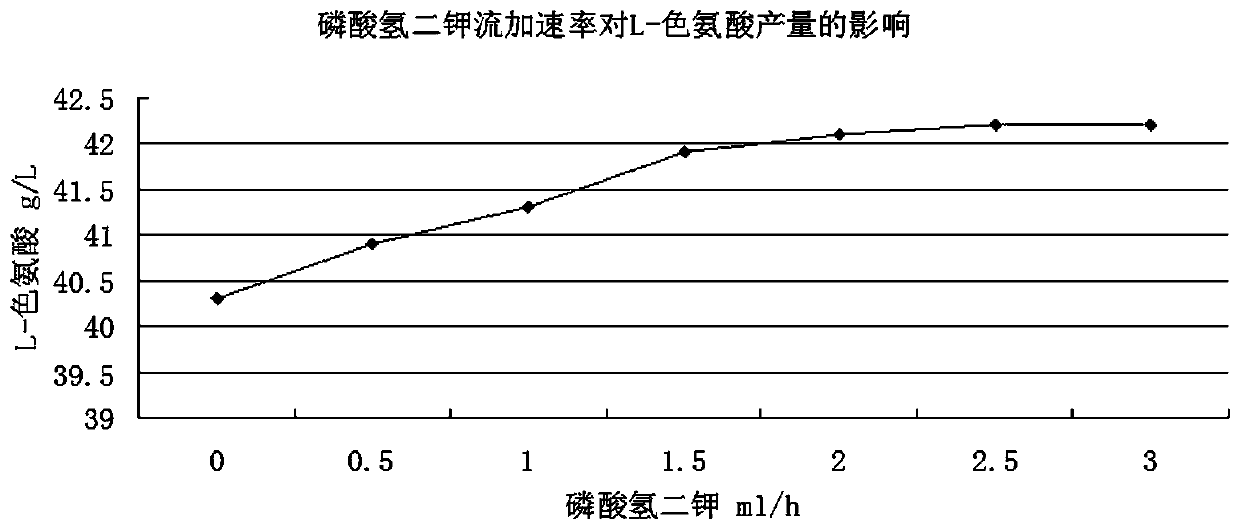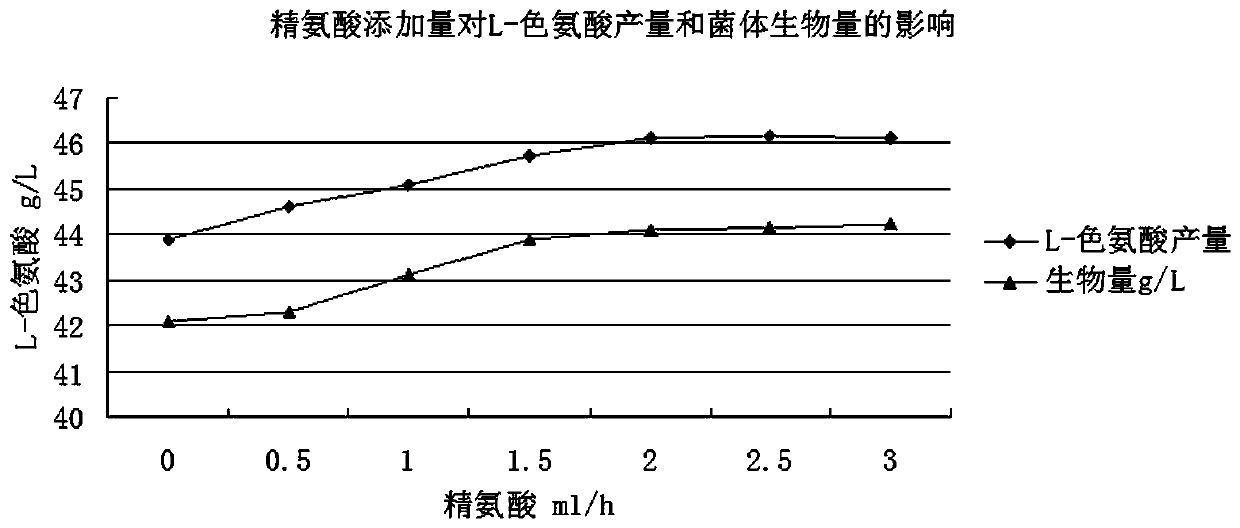Technology for producing and extracting tryptophan
A tryptophan and process technology, applied in the biological field, can solve the problems of high extraction process cost, difficult recovery, and destruction of active ingredients, and achieve the effects of smooth energy circulation and transmission, improved fermentation acid production performance, and maintenance of growth vitality
- Summary
- Abstract
- Description
- Claims
- Application Information
AI Technical Summary
Problems solved by technology
Method used
Image
Examples
Embodiment 1
[0040] A process for producing and extracting tryptophan, comprising the steps of:
[0041] 1. Fermentation process:
[0042] Step 1): L-tryptophan engineering bacterium escherichia coli ( E. coli ) TRTH, cultured to a certain concentration of bacterial liquid;
[0043] Step 2): Inoculate the bacterial solution obtained in step 1) with an inoculum amount of 0.5% in a shake flask equipped with a primary seed medium, and culture it at 100-200 rpm for 10-20 hours at 36° C.;
[0044] Step 3): Inoculate the first-level shake flask seeds obtained in step 2) in the seed tank of the second-level seed medium with an inoculation amount of 5%, control the air volume at 5-10L / min, the rotating speed at 200-400rpm, and the temperature at 35-37°C ℃, the tank pressure is 0.05-0.08MPa, the pH value is controlled at 6.5-6.8 by ammonia water, and cultured for 10-20h;
[0045] Step 4): the secondary fermenter seed (OD) that step 3) obtains 600 The value is 11) inoculated with 7% inoculum in a...
Embodiment 2
[0061] A process for producing and extracting tryptophan, comprising the steps of:
[0062] 1. Fermentation process:
[0063] Step 1): L-tryptophan engineering bacterium escherichia coli ( E. coli ) TRTH, cultured to a certain concentration of bacterial liquid;
[0064] Step 2): inoculate the bacterial liquid obtained in step 1) into a shake flask containing a primary seed medium at an inoculum amount of 0.1%-1%, and culture at 36°C at 100-200rpm for 10-20h;
[0065] Step 3): Inoculate the first-level shake flask seeds obtained in step 2) in the seed tank of the second-level seed medium with an inoculation amount of 1%-10%, control the air volume 5-10L / min, the rotating speed 200-400rpm, and the temperature 35-37°C, tank pressure 0.05-0.08MPa, pH value controlled at 6.5-6.8 by ammonia water, culture for 10-20h;
[0066] Step 4): the secondary fermenter seed (OD) that step 3) obtains 600 The value is 12) inoculated with 6% inoculum in a fermenter with fermentation medium, ...
Embodiment 3
[0082] 1. The effect of the amount of dipotassium hydrogen phosphate added on the production of L-tryptophan in the fermentation broth.
[0083] The fermentation process is the same as in Example 1, without using the step of culture medium. Firstly, the effect of feeding dipotassium hydrogen phosphate solution on fermentation was verified by experiments. like figure 1Described, along with the increase of dipotassium hydrogen phosphate flow rate, in the fermented liquid, the content of L-tryptophan increases accordingly, and when flow velocity is 2ml / h, reaches peak substantially, continues to increase flow velocity, has no effect on tryptophan output. significantly increased, and the influence trend of dipotassium hydrogen phosphate on the cell biomass was similar to that of tryptophan (not shown in the figure), the main reason being that adding dipotassium hydrogen phosphate solution could increase the cell biomass, thereby increasing the tryptophan yield.
[0084] 2. The ...
PUM
 Login to View More
Login to View More Abstract
Description
Claims
Application Information
 Login to View More
Login to View More - R&D
- Intellectual Property
- Life Sciences
- Materials
- Tech Scout
- Unparalleled Data Quality
- Higher Quality Content
- 60% Fewer Hallucinations
Browse by: Latest US Patents, China's latest patents, Technical Efficacy Thesaurus, Application Domain, Technology Topic, Popular Technical Reports.
© 2025 PatSnap. All rights reserved.Legal|Privacy policy|Modern Slavery Act Transparency Statement|Sitemap|About US| Contact US: help@patsnap.com



